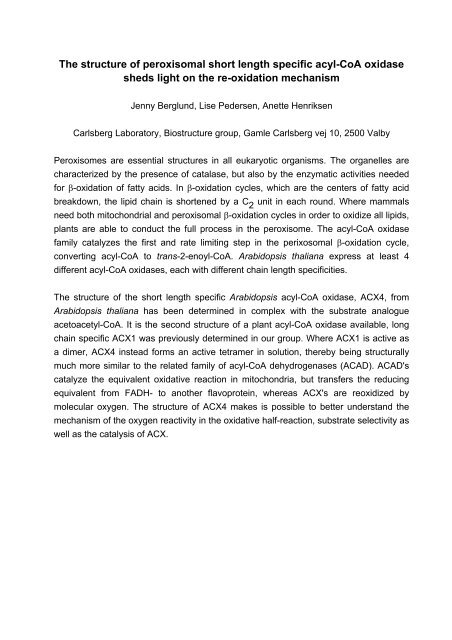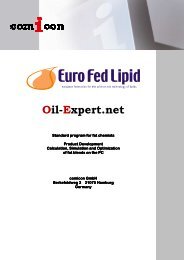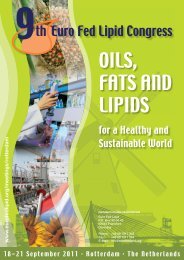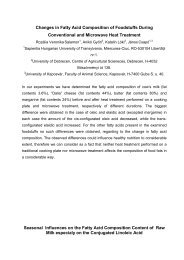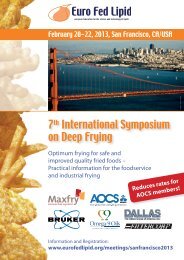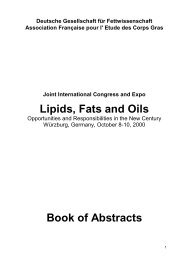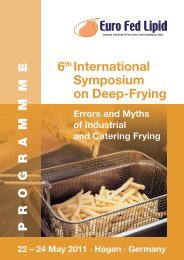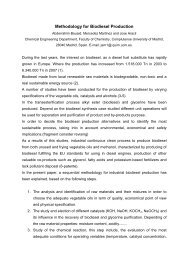Abstracts now available online - Euro Fed Lipid
Abstracts now available online - Euro Fed Lipid
Abstracts now available online - Euro Fed Lipid
You also want an ePaper? Increase the reach of your titles
YUMPU automatically turns print PDFs into web optimized ePapers that Google loves.
The structure of peroxisomal short length specific acyl-CoA oxidase<br />
sheds light on the re-oxidation mechanism<br />
Jenny Berglund, Lise Pedersen, Anette Henriksen<br />
Carlsberg Laboratory, Biostructure group, Gamle Carlsberg vej 10, 2500 Valby<br />
Peroxisomes are essential structures in all eukaryotic organisms. The organelles are<br />
characterized by the presence of catalase, but also by the enzymatic activities needed<br />
for β-oxidation of fatty acids. In β-oxidation cycles, which are the centers of fatty acid<br />
breakdown, the lipid chain is shortened by a C<br />
2<br />
unit in each round. Where mammals<br />
need both mitochondrial and peroxisomal β-oxidation cycles in order to oxidize all lipids,<br />
plants are able to conduct the full process in the peroxisome. The acyl-CoA oxidase<br />
family catalyzes the first and rate limiting step in the perixosomal β-oxidation cycle,<br />
converting acyl-CoA to trans-2-enoyl-CoA. Arabidopsis thaliana express at least 4<br />
different acyl-CoA oxidases, each with different chain length specificities.<br />
The structure of the short length specific Arabidopsis acyl-CoA oxidase, ACX4, from<br />
Arabidopsis thaliana has been determined in complex with the substrate analogue<br />
acetoacetyl-CoA. It is the second structure of a plant acyl-CoA oxidase <strong>available</strong>, long<br />
chain specific ACX1 was previously determined in our group. Where ACX1 is active as<br />
a dimer, ACX4 instead forms an active tetramer in solution, thereby being structurally<br />
much more similar to the related family of acyl-CoA dehydrogenases (ACAD). ACAD's<br />
catalyze the equivalent oxidative reaction in mitochondria, but transfers the reducing<br />
equivalent from FADH- to another flavoprotein, whereas ACX's are reoxidized by<br />
molecular oxygen. The structure of ACX4 makes is possible to better understand the<br />
mechanism of the oxygen reactivity in the oxidative half-reaction, substrate selectivity as<br />
well as the catalysis of ACX.


